Software plays an increasingly vital role in conservation, helping to protect and manage biodiversity through innovative technological solutions. It also facilitates collaboration among researchers, local communities, and governments, empowering them to develop sustainable conservation strategies. However, many of us working in conservation tech don't have the benefit of a large team of software experts to collaborate with or bounce ideas off of. We aim to change that.
This group is for anyone interested in applying software to conservation and wildlife research. Whether you're a developer eager to contribute to conservation or a newbie with valuable data and ideas but limited software experience, this group connects people with diverse expertise. It provides a space for asking questions, sharing resources, and staying informed about new technologies and best practices. We are also committed to supporting technologists and conservationists from the Global South, ensuring that everyone has access to the tools, knowledge, and opportunities to contribute meaningfully.
Our goal is to foster collaboration and avoid "reinventing the wheel" by sharing solutions, whether it's an application, design approach, or a simple script. We also aim to lower barriers to entry by offering mentorship and guidance and providing feedback on technical ideas. This supportive community is a place to learn, connect, and contribute to the advancement of conservation through software. Whether you're looking for software and mobile app developers to help you with your conservation tech needs, have questions about development, are looking for resources, or would like to share your own app, software, or gaming tools, this is the group for you!
Resources
Header photo: Trevor Hebert
Group curators
Wildlife Protection Solutions (WPS)
Software Engineer in Conservation Tech



- 2 Resources
- 15 Discussions
- 10 Groups
Wildlife Protection Solutions (WPS)
Director of Technology at Wildlife Protection Solutions. Primarily focuses on leveraging machine learning and advanced data analytics to combat poaching, monitor biodiversity, and predict environmental threats.
- 0 Resources
- 1 Discussions
- 5 Groups
No showcases have been added to this group yet.
- @iruss
- | she/her
Masters student working on hazel dormouse acoustics
- 0 Resources
- 1 Discussions
- 6 Groups

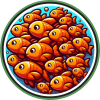
- 0 Resources
- 2 Discussions
- 8 Groups
- @srankin
- | she/her
NOAA Fisheries
Bioacoustics researcher with the National Oceanographic and Atmospheric Administration (NOAA).
- 0 Resources
- 2 Discussions
- 16 Groups
WildTrack
Research, development and implementation of non-invasive montoring for endangered species



- 1 Resources
- 25 Discussions
- 11 Groups
- @tkswanson
- | she/her
San Diego Zoo Wildlife Alliance
Research Coordinator II for the Conservation Technology Lab at SDZWA

- 2 Resources
- 2 Discussions
- 7 Groups
Software engineer working on natural resource management technology.
- 0 Resources
- 3 Discussions
- 6 Groups
My research focuses on using Next-Generation Sequencing (NGS) to study endangered species, including carnivores, chiropterans (bats), and lizards, as well as their microbiomes.
- 1 Resources
- 4 Discussions
- 19 Groups
- @rowan
- | they / them
Octophin Digital
Jack of all Trades. I've been a zoo keeper, a conservation geneticist and a web developer who specialises in conservation projects and orgs.


- 1 Resources
- 5 Discussions
- 15 Groups
Physicist and software engineer with over 40 years experience in science and technology.

- 0 Resources
- 0 Discussions
- 1 Groups
- @TinaSv
- | Her
15+ yr software developer. Dual Msc on Computer Science and Environmental Engineering. Vision is to conserve more natural habitats.
- 0 Resources
- 0 Discussions
- 2 Groups
- @resoltis
- | she/her/hers
Currently pursuing a Masters in Artificial Intelligence and Data Science with the hopes of doing work in bioacoustics! Interested in volunteering, internships, and learning about all of the cool conservation tech out there :)
- 0 Resources
- 0 Discussions
- 5 Groups
- @KB
- | she/her
Wildlife ecologist specializing in animal movement modeling and habitat selection with a strong interest in conservation policy and management decisions.
- 0 Resources
- 0 Discussions
- 17 Groups
The Captain Planet Foundation is offering EcoTech grants in the amount of $2,500 to engage children in inquiry-based project in STEM fields.
18 February 2016
Colleen Macklin, Director of PETLab, is enthusastic about using games to solve real-world problems. At the WWF Fuller Symposium, she discussed the serious potential games have for conservation and offered examples of...
13 January 2016
Margaret Driciru, Senior Warden & Wildlife Veterinarian with the Uganda Wildlife Authority, showcases how mobile reporting technology is being used in the field to monitor, collect data, and send rapid alerts when...
22 December 2015
Can games have real world impacts on issues like the illegal wildlife trade? In part two of his case study for the Gaming for Conservation Group, Peter Jacobs discusses United for Wildlife's efforts to engage young...
3 December 2015
Can games raise awareness of conservation issues like the illegal wildlife trade? In part one of his case study for the Gaming for Conservation Group, Peter Jacobs discusses how United for Wildlife is partnering with...
25 November 2015
The speed at which data travels from the point of collection to a format which is understandable and useful for decision makers can be of critical importance. In this case study, Tim Wilkinson discusses a powerful suite...
6 November 2015
August 2025
November 2025
event
August 2024
June 2024
48 Products
Recently updated products
| Description | Activity | Replies | Groups | Updated |
|---|---|---|---|---|
| Hi everybody 👋🏽,I'm a UX designer, and I design interfaces and improve user experiences/flows. I would love to contribute to conservation... |
|
Software Development | 2 years 3 months ago | |
| That sounds like a really neat project! Do fish get re-caught often enough that individual ID is useful? Is sample bias (more data from popular spots) an issue? |
|
AI for Conservation, Citizen Science, Software Development | 2 years 3 months ago | |
| Hello all! Bluspark is a plateform that allows natural area managers such as natural parks or reserves to optimize their day to day... |
|
Citizen Science, Community Base, Connectivity, Conservation Tech Training and Education, Ethics of Conservation Tech, Protected Area Management Tools, Software Development | 2 years 3 months ago | |
| Thank you so much for your reply! I'll look in to this now :) |
|
Acoustics, Autonomous Camera Traps for Insects, Camera Traps, Data management and processing tools, Drones, Geospatial, Software Development | 2 years 4 months ago | |
| Hi Andrea! Although I am a keen user and observer of the Moveapps initiative, my R or Python coding skills are next to non- existing. I am therefore not likely to be contributing... |
|
Animal Movement, Conservation Tech Training and Education, Data management and processing tools, Emerging Tech, Human-Wildlife Coexistence, Open Source Solutions, Software Development | 2 years 5 months ago | |
| I'm curious to understand how people are using satellite data. What problems does satellite imagery solve for you?... |
|
Geospatial, Software Development | 2 years 5 months ago | |
| Hi all, In the last couple of months I have started using the Google 'Lens' app on my Android phone and I have been really impressed... |
|
Software Development, Wildlife Crime | 2 years 5 months ago | |
| Depending on the type of data you're needing to collect, the EarthRanger or SMART platforms might be helpful. They each have mobile apps but also a suite of integrated software to... |
|
Software Development | 2 years 6 months ago | |
| Hi Jim, could you please update us on your final choice and experience so far? |
+13
|
Citizen Science, Software Development | 2 years 6 months ago | |
| No, I was never able to figure out how to send these to anyone on here. I was hoping to learn how to clear these videos up if possible! |
|
Camera Traps, Data management and processing tools, Open Source Solutions, Software Development | 2 years 7 months ago | |
| Fab - thanks Carly! |
|
Software Development | 2 years 9 months ago | |
| The open-source program Audacity can show the spectrograms and histograms and has quite a lot of other useful features, e.g. playing ultrasound calls slower, so it can be heard by... |
|
Acoustics, Citizen Science, Data management and processing tools, Open Source Solutions, Software Development | 2 years 9 months ago |
Scaling biodiversity scoring for supply chains aligned with TNFD
20 February 2024 9:44am
Wildlife Drones will be hosting in-person demos in the U.S.
12 February 2024 3:32am
Conservation Technology Intern - The Wildlife Restoration Foundation
8 February 2024 7:52pm
Southern African Wildlife Management Association Conference 2024
6 February 2024 12:20pm
Passionate engineer offering funding and tech solutions pro-bono.
23 January 2024 12:06pm
2 February 2024 1:22pm
Hi Danilo. you seem very passionate about this initiative which is a good start.
It is an interesting coincidence that I am starting another project for the coral reefs in the Philipines which also requires water analytics so I can probably work on both projects at the same time.
Let's that have a call and discuss, will send you a pm with my contact details
There is a tech glitch and I don't get email notifications from here.
Need advice - image management and tagging
12 January 2024 7:55pm
15 January 2024 8:47pm
Interesting, Iʻll give it a shot. Looks like this could save me some time.
Thanks for the explanation @wade!
24 January 2024 5:16pm
I have no familiarity with Lightroom, but the problem you describe seems like a pretty typical data storage and look up issue. This is the kind of problem that many software engineers deal with on a daily bases. In almost every circumstance this class of problem is solved using a database.
In fact, a potentially useful analysis is that the Lightroom database is not providing the feature set you need.
It seems likely that you are not looking for a software development project, and setting up you own DB would certainly require some effort, but if this is a serious issue for your work, you hope to scale your work up, or bring many other participants into your project, it might make sense to have an information system that better fits your needs.
There are many different databases out there optimized for different sorts of things. For this I might suggest taking a look at MongoDB with GridFS for a couple of reasons.
- It looks like you meta data is in JSON format. Many DBs are JSON compatible, but Mongo is JSON native. It is especially good at storing and retrieving JSON data. Its JSON search capabilities are excellent and easy to use. It looks like you could export your data directly from Lightroom into Mongo, so it might be pretty easy actually.
- Mongo with the GridFS package is an excellent repository for arbitrarily large image files.
- It is straightforward to make a Mongo database accessible via a website.
- They are open source (in a manner of speaking) and you can run it for free.
Disclaimer: I used to work for MongoDB. I don't anymore and I have no vested interest at all, but they make a great product that would really crush this whole class of problem.
25 January 2024 8:32am
Hi!
I would take a look at
Although developed for camera trap imagery, it is by no means restricted to such.
Cheers,
Lars
Ignite Labs: Space for Nature & Biodiversity Series
21 January 2024 2:46pm
Two year postdoc - Machine Learning & Bioacoustics
16 January 2024 7:49am
Wildlife Conservation for "Dummies"
9 January 2024 10:02pm
10 January 2024 11:24pm
Maybe this is obvious, but maybe it's so obvious that you could easily forget to include this in your list of recommendations: encourage them to hang out here on WILDLABS! I say that in all seriousness: if you get some great responses here and compile them into a list, it would be easy to forget the fact that you came to WILDLABS to get those responses.
I get questions like this frequently, and my recommended entry points are always (1) attend the WILDLABS Variety Hour series, (2) lurk on WILDLABS.net, and (3) if they express a specific interest in AI, lurk on the AI for Conservation Slack.
I usually also recommend that folks visit the Work on Climate Slack and - if they live in a major city - to attend one of the in-person Work on Climate events. You'll see relatively little conservation talk there, but conservation tech is just a small subset of sustainability tech, and for a new person in the field, if they're interested in environmental sustainability, even if they're a bit more interested in conservation than in other aspects of sustainability, the sheer number of opportunities in non-conservation-related climate tech may help them get their hands dirty more quickly than in conservation specifically, especially if they're looking to make a full-time career transition. But of course, I'd rather have everyone working on conservation!
13 January 2024 3:14am
Some good overview papers I'd recommend include:
- Besson, M., Alison, J., Bjerge, K., Gorochowski, T. E., Høye, T. T., Jucker, T., ... & Clements, C. F. (2022). Towards the fully automated monitoring of ecological communities. Ecology Letters, 25(12), 2753-2775.
- Speaker, T., O'Donnell, S., Wittemyer, G., Bruyere, B., Loucks, C., Dancer, A., ... & Solomon, J. (2022). A global community‐sourced assessment of the state of conservation technology. Conservation Biology, 36(3), e13871.
- WILDLABS-led research! Led by @TaliaSpeaker and @StephODonnell
- Lahoz-Monfort, J. J., & Magrath, M. J. (2021). A comprehensive overview of technologies for species and habitat monitoring and conservation. BioScience, 71(10), 1038-1062.
- Tuia, D., Kellenberger, B., Beery, S., Costelloe, B. R., Zuffi, S., Risse, B., ... & Berger-Wolf, T. (2022). Perspectives in machine learning for wildlife conservation. Nature communications, 13(1), 792.
- Stowell, D. (2022). Computational bioacoustics with deep learning: a review and roadmap. PeerJ, 10, e13152.
- I'm biased towards bioacoustics because that's what I focus on, but this regardless this is an excellent horizon scan of AI/ML for conservation and acoustics!
- Borowiec, M. L., Dikow, R. B., Frandsen, P. B., McKeeken, A., Valentini, G., & White, A. E. (2022). Deep learning as a tool for ecology and evolution. Methods in Ecology and Evolution, 13(8), 1640-1660.
I'd also encourage you to follow the #tech4wildlife hashtags on social media!
15 January 2024 4:27pm
I'm also here for this. This is my first comment... I've been lurking for a while.
I have 20 years of professional knowledge in design, with the bulk of that being software design. I also have a keen interest in wildlife. I've never really combined the two; and I'm starting to feel like that is a waste. I have a lot to contribute. The loss of biodiversity is terrifying me. So I’m making a plan that in 2024 I’m going to combine both.
However, if I’m honest with you – I struggle with where to start. There are such vast amounts of information out there I find myself jumping all over the place. A lot of it is highly scientific, which is great – but I do not have a science background.
As suggested by the post title.. a “Wildlife Conservation for Dummies” would be exactly what I am looking for. Because in this case I’m happy to admit I am a complete dummy.
How do you access the internet remotely?
24 July 2017 5:29pm
19 December 2023 7:45am
Wow! Those Yeti things are just what are needed for the wild passage project:
Goal Zero Portable Power Stations - Home backup, Off-grid
Goal Zero Portable Power Stations vind je bij Solar Power Supply. Draagbaar, of als UPS systeem in huis. Backup energy, noodvoorziening systeem voor off-grid.
12 January 2024 1:32pm
My solution is usually wayyyy more traditional and involves climbing the tallest tree or hiking the highest hill.
That being said, I cant find a clear explanation about how BRCK works and I assumed it used signal repeater, which is illegal in many countries. It is also very prone of lightning strike, which is the reason I did not use it as I live in a very lightning-prone area.
12 January 2024 2:08pm
Trying to make sense of this brick product, the link provided is a bit vague. The front page talks about SIP trunking, so that implies it's all about telephone connectivity. And hence not related to the internet itself. Surely that means you have to already have an Internet connection? If that is the case, would not whatsapp voice calls be just as useful and a lot easier ? I've re-read it a few times and it does not seem to be any product relating to providing remote Internet connectivity??? Seems more like a way to extend your telephone network to a remote one for a business.
Presentation opportunity: Text analysis for conservation (NACCB 2024)
8 January 2024 4:05pm
Assessing the biodiversity impact of palm oil facilities around the world
4 January 2024 12:07pm
Update on SEE Shell App to identify illegal tortoiseshell products
14 December 2023 10:00pm
Data Viz Inspo for the Holidays
11 December 2023 8:42pm
Data integration platforms
28 March 2019 9:27am
20 November 2023 8:19pm
Hey Chris - you haven't missed Variety Hour! It's this week!
1 December 2023 8:56pm
Argos has an API
Iridium data either arrives via email/server IP
Globalstar (unknown)
If you'd like the web services document for Argos, shoot me an email (tgray at woodsholegroup - dotcom).
1 December 2023 8:56pm
(duplicate)
ICOTEQ launch TAGRANGER® system of products
23 November 2023 1:25pm
Firetail - Black Friday
Software Engineer at Rainforest Connection & Arbimon
14 November 2023 12:30am
Insight; a secure online platform designed for sharing experiences of conservation tool use.
7 November 2023 1:01pm
TWS2023 - get in touch
5 November 2023 8:13pm
5 November 2023 9:04pm
I'm registered with the TWS2023 app, so feel free to nudge me there as well
Payment for ecosystem services - mobile money case study?
27 October 2023 2:59pm
30 October 2023 10:23am
Huge thank you Carly!
3 November 2023 12:36pm
The folks at AB Entheos in Nairobi are also looking at wild life damage insurance https://ab-entheos.co.ke/
5 November 2023 4:09pm
Thanks Arky!
DeepFaune: a software for AI-based identification of mammals in camera-trap pictures and videos
14 July 2023 3:14pm
24 October 2023 8:46pm
Hello to all, new to this group. This is very exciting technology. can it work for ID of individual animals? we are interested in Ai for identifying individual jaguars (spots) and andean Bears (face characteristics). Any recommendation? contact? thanks!
German
25 October 2023 8:57am
That's a very interesting question and use case (I'm not from deepfaune). I'm playing with this at the moment and intend to integrate it into my other security software that can capture and send video alerts. I should have this working within a few weeks I think.
The structure of that software is that it is two stage, the first stage identifies that there is an animal and it's bounding box and then there's a classification stage. I intend to merge the two stages so that it behaves like a yolo model so that the output is bounding boxes as well as what type of animal it is.
However, my security software can cascade models. So if you were able to train a single stage classifier that identifies your particular bears, then you could cascade all of these models in my software to generate an alert with a video saying which bear it was.
4 November 2023 4:51am
Hi @GermanFore ,
I work with the BearID Project on individual identification of brown bears from faces. More recently we worked on face detection across all bear species and ran some tests with identifying Andean bears. You can find details in the paper I linked below. We plan to do more work with Andean bears in 2024.
I would love to connect with you. I'll send you a message with my email address.
Regards,
Ed
Multispecies facial detection for individual identification of wildlife: a case study across ursids | Mammalian Biology
To address biodiversity decline in the era of big data, replicable methods of data processing are needed. Automated methods of individual identification (I
Restoring the Mara Elephant Population Using Coexistence Tech Solutions with Mara Elephant Project's Wilson Sairowua
20 October 2023 1:31pm
27 May 2024 3:54pm
28 May 2024 8:12am
Biodiversity Intactness dataset now available on the Earth Engine community catalog
16 October 2023 1:21pm
Mozilla Foundation, funding for nature conservation
4 October 2023 6:30pm
Co-Founder & CTO (Chief Technology Officer)
4 October 2023 4:00pm
Software for recording field data?
6 September 2023 3:01pm
22 September 2023 11:08am
Have a look at kobocollect, very easy to use and reliable, can collect data and then send them to the cloud when you have internet.
Other solution:
QField - Efficient field work built for QGIS
SMART Conservation Software - Spatial Monitoring and Reporting Tool (smartconservationtools.org)
EarthRanger: Protecting Wildlife With Real-Time Data
Natural Resource Data Solutions - Land & Resource Management
Efficient tools for effective resource management. Natural Resource Data Solutions provides data collection and resource management tools for land owners and environment conservation agencies, public and private.
22 September 2023 4:05pm
I second Kobo/CyberTracker for tracks, but if you have money for an ArcGIS Online license, Survey123 is great (offline use - but can't record tracks)
22 September 2023 6:11pm
We use Kobo as well - it is amazing!!!
Gundi: The Universal Adaptor for Conservation Technologies
13 September 2023 4:28pm



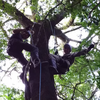
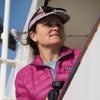
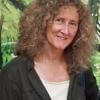
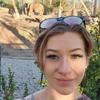
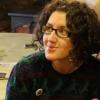





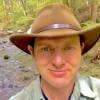
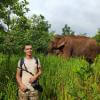

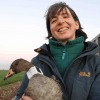



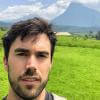







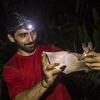




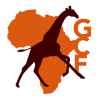









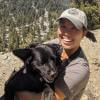







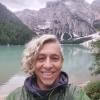






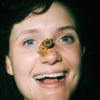
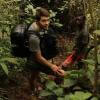

26 January 2024 3:18pm
Hi Krasi! Greetings from Brazil!
That's a cool journey you've started! Congratulations. And I felt like theSearchLife resonates with the work I'm involved round here. In a nutshell, I live at the heart of the largest remaining of Atlantic forest in the planet - one of the most biodiverse biomes that exist. The subregion where I live is named after and bathed by the "Rio Sagrado" (Sacred River), a magnificent water body with a very rich cultural significance to the region (it has served as a safe zone for fleeing slaves). Well, the river and the entire bioregion is currently under the threat of a truly devastating railroad project which, to say the least is planned to cut through over 100 water springs!
In face of that the local community (myself included) has been mobilizing to raise awareness of the issue and hopefully stop this madness (fueled by strong international forces). One of the ways we've been fighting this is through the seeking of the recognition of the sacred river as an entity of legal rights, who can manifest itself in court, against such threats. And to illustrate what this would look like, I've been developing this AI (LLM) powered avatar for the river, which could maybe serve as its human-relatable voice. An existing prototype of such avatar is available here. It has been fine-tuned with over 20 scientific papers on the Sacred River watershed.
And right now myself and other are mobilizing to manifest the conditions/resources to develop a next version of the avatar, which would include remote sensing capacities so the avatar is directly connected to the river and can possibly write full scientific reports on its physical properties (i.e. water quality) and the surrounding biodiversity. In fact, myself and 3 other members of the WildLabs community have just applied to the WildLabs Grant program in order to accomplish that. Hopefully the results are positive.
Finally, it's worth mentioning that our mobilization around providing an expression medium for the river has been multimodal, including the creation of a shortfilm based on theatrical mobilizations we did during a fest dedicated to the river and its surrounding more-than-human communities. You can check that out here:
Let's chat if any of that catches your interest!
Cheers!